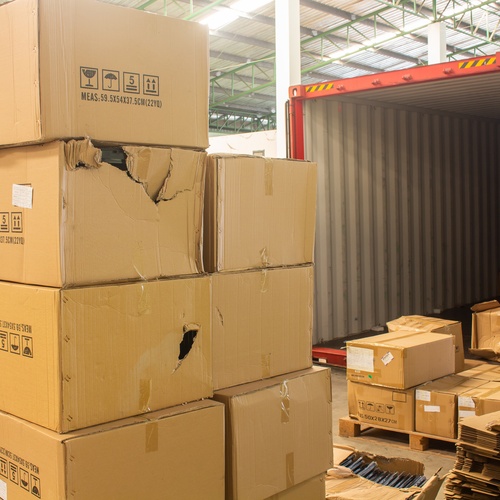
E-commerce businesses face numerous challenges, but one threat quietly drains profits while remaining largely invisible on balance sheets. The hidden cost of freight damage in e-commerce extends far beyond simple product replacement expenses by creating a ripple effect that impacts every aspect of operations.
Most online retailers focus on marketing costs, conversion rates, and customer acquisition expenses. However, damaged goods during transit create financial consequences that compound over time, often exceeding what businesses initially calculate.
Direct Financial Impact
Freight damage creates immediate and measurable costs for e-commerce businesses. These expenses go beyond the damaged goods and affect multiple areas of operations and finance.
Product Loss and Replacement Expenses
Freight damage immediately destroys inventory value. Companies must absorb the cost of damaged products while simultaneously purchasing or manufacturing replacements. This double expense reduces profit margins significantly, especially for businesses operating on thin margins.
Insurance and Claims Processing
Insurance premiums increase when damage claims become frequent. Processing these claims requires administrative resources, legal documentation, and extended communication with carriers. Each claim generates paperwork, delays, and potential disputes that consume valuable time and money.
Operational Disruptions
Freight damage creates ripple effects that disrupt day-to-day business operations and customer relationships. These challenges demand immediate attention and divert resources from core activities.
Customer Satisfaction Challenges
Damaged products create immediate customer service issues. Disappointed customers often leave negative reviews, request refunds, or abandon future purchases. These consequences extend far beyond single transactions by affecting long-term customer lifetime value and brand reputation.
Internal Resource Allocation
Staff members must redirect their attention from growth activities to damage control. Customer service representatives handle complaints, warehouse teams process returns, and managers coordinate replacement shipments. This operational disruption slows business momentum and reduces productivity.
Prevention Through Proper Securement
Preventing freight damage starts with implementing the right securement techniques. Proper blocking, bracing, and tie-down methods form the foundation of effective cargo protection.
Strategic Blocking and Bracing
Effective blocking and bracing systems prevent cargo movement during transit. These securement methods distribute forces evenly across shipments and reduce the likelihood of damage during acceleration, braking, and turning. High-quality blocking materials withstand significant force loads while maintaining cargo stability.
Proper tie-down methods complement blocking and bracing efforts by creating comprehensive securement systems. Various tie-down strap types serve different cargo requirements, ensuring optimal protection for diverse product categories.
Integrated Safety Approaches
Smart e-commerce businesses implement specialized freight securement systems as standard operating procedures. These systems reduce damage rates consistently to protect immediate profits and long-term customer relationships.
You can apply strategies to update your manufacturing business across the entire supply chain by creating comprehensive damage prevention protocols.
Strategic Investment Considerations
The hidden cost of freight damage in e-commerce demands proactive solutions rather than reactive responses. Companies that invest in proper securement equipment and training typically see immediate returns through reduced damage claims and improved customer satisfaction.
Freight securement represents insurance against profit loss, reputation damage, and operational disruption. The initial investment in quality blocking, bracing, and tie-down systems pays dividends through consistent cargo protection and reduced hidden costs.
Leave a Reply